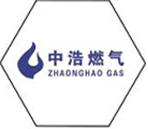
Aug . 06, 2024 08:46
Back to list
Electric Control Valve Regulation System for Optimizing Fluid Flow Management and Efficiency
Understanding Electric Regulation Valves
Electric regulation valves, commonly referred to as electric control valves, play a crucial role in various industrial applications, particularly in fluid control systems. These devices automatically regulate the flow of liquids, gases, or steam in response to a control signal, ensuring efficient operation and optimizing system performance. In this article, we will explore the essential components, working principles, applications, and benefits of electric regulation valves.
Components of Electric Regulation Valves
Electric regulation valves typically consist of several key components
1. Valve Body This is the main structure of the valve that houses the flow control mechanism. The body is designed to withstand the specific pressure and temperature conditions of the application.
2. Actuator This is the electric motor responsible for opening or closing the valve. Actuators can be of various types, including rotary, linear, or solenoid-driven, depending on the valve design and application needs.
3. Positioner The positioner is an electronic component that receives control signals from a central system (such as a PLC) and sends feedback to the actuator, ensuring that the valve opens or closes to the required position accurately.
.
Working Principles
صمام تنظيم كهربائي

The operation of electric regulation valves is straightforward yet effective. When a control system (like a SCADA or DCS) determines the need to adjust the flow of a substance, it sends a signal to the valve actuator. The actuator then moves the valve to the specified position, which could be partially open, fully open, or closed, depending on the requirements. The positioner helps in fine-tuning the valve's position by continuously monitoring it and making adjustments as necessary.
This feedback control loop allows for precise regulation of flow rates, ensuring that processes remain efficient. Additionally, these valves can be equipped with sensors that provide real-time data on flow rates, pressure, and temperature, facilitating better decision-making.
Applications
Electric regulation valves are widely used across different sectors. In the chemical industry, they control the flow of reactants and products, ensuring optimal reaction conditions. In HVAC systems, they help regulate airflow and temperature, improving energy efficiency in buildings. The oil and gas industry utilizes these valves for flow control in pipelines and refineries, enabling safe and efficient handling of hazardous materials.
Moreover, in the water treatment sector, electric regulation valves are pivotal in managing the flow of water and chemicals, ensuring compliance with environmental regulations. Their precision and reliability make them indispensable tools in any automation system.
Benefits of Electric Regulation Valves
The primary advantages of electric regulation valves include
1. Energy Efficiency They optimize fluid flow, minimizing wastage and reducing energy consumption. 2. Precision Control The ability to adjust flow accurately improves overall system efficiency and product quality. 3. Reduced Maintenance Electric valves often require less maintenance compared to their pneumatic or hydraulic counterparts, as they have fewer moving parts that can wear out. 4. Automation Compatibility Their ability to integrate easily with automated control systems enhances operational convenience and monitoring.
In conclusion, electric regulation valves are vital components in modern industrial applications, offering precise control over fluid dynamics and contributing to enhanced efficiency and reliability in various processes. As industries continue to evolve technologically, the significance of electric regulation valves will only grow, driving innovations and improvements across multiple sectors.
Latest news
-
Safety Valve Spring-Loaded Design Overpressure ProtectionNewsJul.25,2025
-
Precision Voltage Regulator AC5 Accuracy Grade PerformanceNewsJul.25,2025
-
Natural Gas Pressure Regulating Skid Industrial Pipeline ApplicationsNewsJul.25,2025
-
Natural Gas Filter Stainless Steel Mesh Element DesignNewsJul.25,2025
-
Gas Pressure Regulator Valve Direct-Acting Spring-Loaded DesignNewsJul.25,2025
-
Decompression Equipment Multi-Stage Heat Exchange System DesignNewsJul.25,2025

